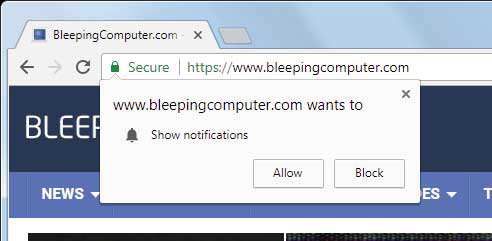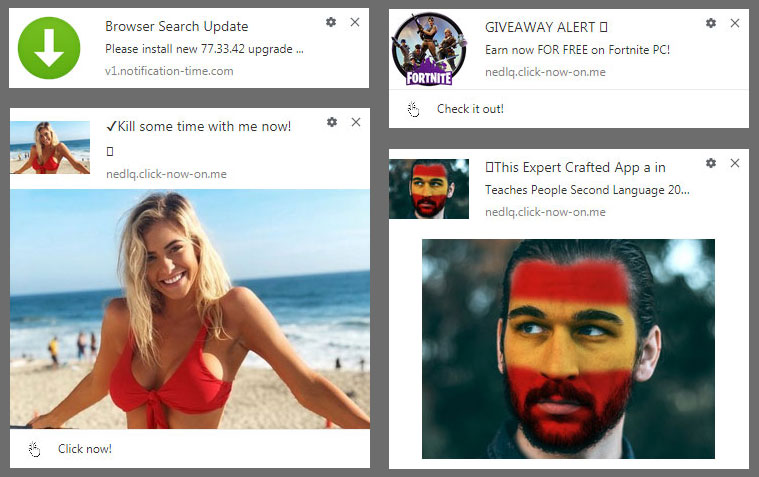
Microsoft is now using crowdsourcing to determine whether to show a site's website subscription dialog prompt in the Microsoft Edge web browser.
Websites have increasingly started to show prompts to sign up for browser notifications subscriptions that deliver the site's new content, even when a subscriber does not have a browser open.

When subscribed, websites push notifications delivered as small boxes on your operating system's desktop, which users can then click to open the webpage.
While developers created this service with good intentions, scammers and threat actors quickly adopted this technique to spam unwanted content to your computer, such as malicious programs, scams, adult sites, and tech support scams.

Microsoft Edge turns to crowdsourcing
After Microsoft rolled out their quiet notification requests feature in Edge 84, they noticed a significant drop in undesired notifications dialog prompts, but at the same time, legitimate sites' notifications were affected as well.

This week, Microsoft announced that Microsoft Edge 88 is now using a feature called adaptive notification requests that uses crowdsourcing to determine whether a site's notification dialog is displayed.
Using this new feature, if enough people subscribe to a site's notification dialog prompts, it indicates that the site is well-liked, and Microsoft Edge will show the full notification subscription dialog.
However, if most users click no to a site's subscription requests, Edge will show the quiet notification dialog.
"With this new approach, we provide either the full prompt or quiet requests based on the data accrued from actual user choices – we’re crowdsourcing!"
"We suggest site owners provide permission requests with consideration to the user’s context and timing, after users have engaged with sites. Sites that follow good practices and earn a high user acceptance rate will begin to show the full prompt without being “quieted.”," Microsoft explained in a blog post this week.
When displaying quiet notifications using the adaptive notification request feature, it will state Edge automatically blocked the site's notifications as most people block them at this site.
"Because most people block notifications on this site, we've automatically blocked notifications," reads Microsoft Edge's new notification dialog.

This feature is now live in Microsoft Edge 88 and will only be enabled if Settings > Cookies and site permissions > Notifications > Quiet notification requests is disabled.



Post a Comment Community Rules
You need to login in order to post a comment
Not a member yet? Register Now